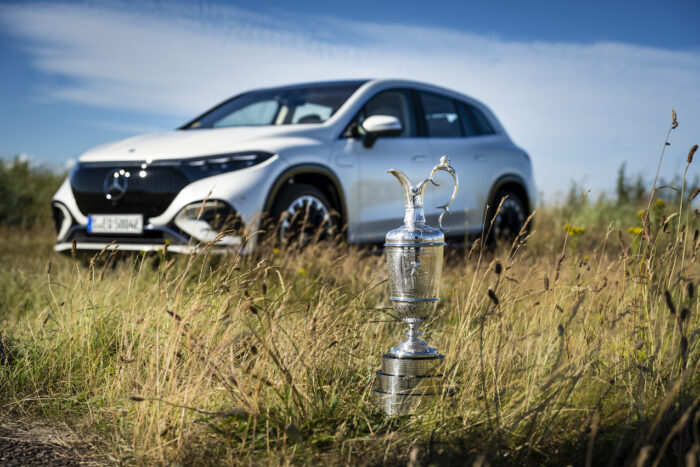The prestigious legacy and global excitement of the Open Championship
We’re still a little more than five months away from the 2024 Open Championship, but it’s never too early for the hype to start building when talking about the oldest golf tournament in the entire world.
While it may not have the same level of clout that The Masters Tournament does these days, the Open is still one of the most prestigious and popular events in the world of golf… and for the top athletes in the sport, it’s hard to pass up the opportunity to get recognized as “The Champion Golfer of the Year,” the title bestowed upon the winner of the Open.
Here’s everything you need to know about the event, including how the course plays, the traditions that help make it one of the signature events in the sport, a brief history of how it came into being and, of course, betting advice before the Open kicks off.
A brief history of the Open
The Open Championship is so entwined with the history of golf that it’s difficult to separate one from the other. In the early days of the sport, golf was mainly played by gentlemen who were pretty well off to begin with, given the expenses required to take part—in those days, fees largely centered around golf ball and club production rather than country club fees or tee time bookings, but it’s a trend that remains to this day.
In the mid 1800s, Allan Robertson of Scotland made quite the name for himself as one of the first professional golfers, winning money with his talent by making friendly wagers in competition and quickly building a reputation as the best of the best. Following his death in 1859, fellow Scottish golfer James Ogilvie Fairlie saw a need to fill the champion-worthy void that Robertson left behind, so he established the Open the following year as an annual event designed to determine that year’s champion.
After the first competition, Fairlie thought it would be a good idea to open the competition to the masses, ensuring that anyone could join and test their mettle as a golfer—and creating the ‘Open’ moniker that exists to this day.
The identity of the competition slowly took shape throughout the years, with elements like the course location rotation and championship prizes added as the Open continued to gain popularity.

What To know about the Open: course style and betting tips
Even with close to half a year before the Open Championship kicks off, we already have some way too early odds on who will win at sites like Free Bets UK. As things stand right now, Rory McIlroy of Northern Ireland is the odds on favorite to win his second ever Open Championship, listed as high as +700 to do so. That’s a break from the usual trends, which list whoever is the current No. 1 in the PGA Tour rankings as the favorite for all major tournaments. Right now, McIlroy sits No. 2 in the PGA rankings behind American golfer Scottie Scheffler, so perhaps McIlroy is given a boost in the odds because he’s already won an Open of his own.
The course used for the Open rotates between a cycle of five or six different locations along the coast of Scotland, England or occasionally Northern Ireland. McIlroy won his Open at Royal Liverpool in 2014, while this year’s event will take place at the Royal Troon Golf Club in Scotland, so it’s not like he has a massive advantage based on the location… although style plays an important role on the unique links courses.
Those coastal courses deal with quite a bit of wind coming in off the sea, and the lack of trees to block the breeze forces golfers to try flatter trajectory shots that aren’t as easy to control. Natural bunkers and rough shrubs create nasty natural challenges for golfers who struggle to control their shots: rather than being carefully planned like many courses in the United States, it is Mother Nature who designs the links courses… and she is often the toughest foe of all.
Traditions to remember
As with any long standing event, pageantry plays a big role in the popularity of the Open. The Claret Jug was established as the championship trophy in 1872, and it remains to this day, a stately silver chalice with a towering base.
Winning golfers would get to hang on to the trophy until the next Open took place the following year, giving them a chance to defend their title or surrender the prize to the next champion. These days, the original Claret Jug remains on display at the R&A’s Clubhouse at St Andrews, a course considered the crown jewel of the Open as a competition. Instead, winners receive a replica and get their name engraved upon it, surrendering it when they can’t continue their title defense any longer.
The engraving is complete by the time the trophy is awarded at the end of the event, leading broadcasters to speculate when it is safe for the craftsman to begin editing the trophy: sudden lead changes late in the match could create a nasty complication for an engraver hard at work.















Let me tell You a sad story ! There are no comments yet, but You can be first one to comment this article.
Write a comment